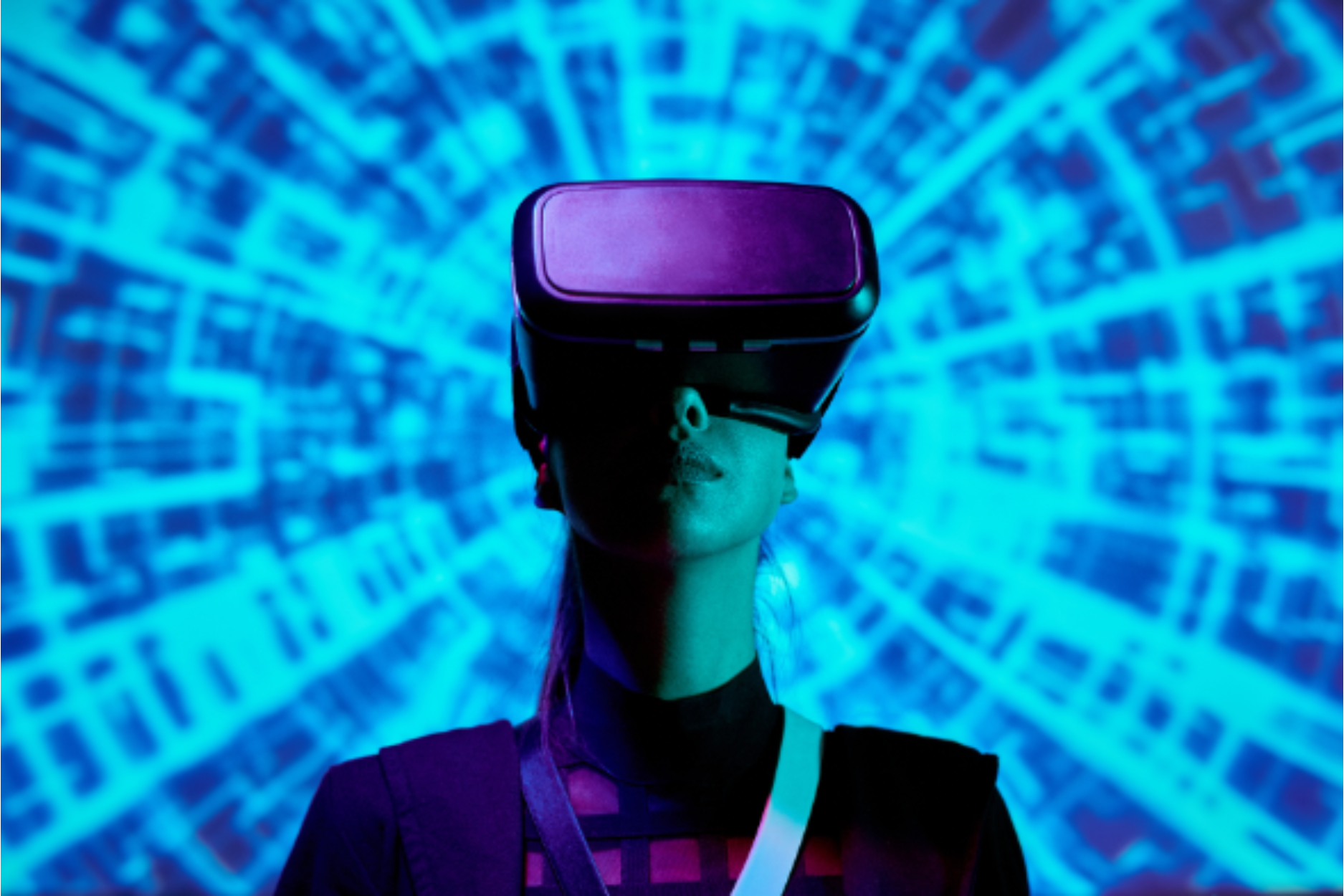
In today's visually oriented world, where a picture is worth a thousand words, the importance of immersive 3D technologies in revolutionizing the e-commerce landscape cannot be overstated. These cutting-edge technologies, such as 3D product images, augmented reality (AR), and virtual reality (VR), have transformed the way customers interact with products and have become essential tools for businesses in enhancing the customer experience, driving conversions, and reducing product returns. In this comprehensive guide, we will explore the numerous benefits of immersive 3D technologies in e-commerce and delve into the various applications that can take your online business to new heights.

The e-commerce market has witnessed remarkable growth in recent years, with global sales reaching nearly 5 trillion USD in 2021. As competition intensifies and consumers become increasingly discerning, businesses are seeking innovative ways to differentiate themselves and meet the evolving demands of their customers. This is where immersive technologies come into play, offering a transformative solution to enhance the online shopping experience.
Immersive technologies, such as parallel reality, 3D product images, AR, and VR, provide a more interactive and engaging environment for customers to explore and visualize products. By bridging the gap between the physical and digital worlds, these technologies empower customers to make informed purchase decisions, resulting in higher customer satisfaction, increased conversions, and reduced product returns.
The adoption of immersive technologies in e-commerce brings forth a myriad of benefits for businesses and customers alike. Let's delve into some of the key advantages that these technologies offer:
Immersive technologies enable customers to visualize and interact with products in a way that traditional 2D imagery cannot match. Through 3D product images, customers can view products from various angles, zoom in on details, and even customize certain aspects, providing a more comprehensive understanding of the product and enhancing the overall shopping experience.
The interactive nature of immersive technologies captivates customers and holds their attention for longer periods. Research has shown that interactive 3D product visualizations can increase the time spent on a product page by 15-40 seconds. This extended engagement translates into higher conversion rates, as customers are more likely to make a purchase when they can fully explore and connect with a product.
One of the major challenges in e-commerce is the high rate of product returns, often due to the discrepancy between the online representation of a product and its real-life appearance. Immersive technologies address this issue by providing customers with a realistic and accurate representation of products. This reduces the likelihood of disappointment upon delivery and subsequently reduces the number of returns, saving businesses time and resources.
Immersive technologies instill confidence in customers by offering a more realistic and immersive shopping experience. By allowing customers to interact with products in a virtual environment, businesses can showcase the quality, design, and features of their products more effectively, building trust and credibility with customers.
In a crowded e-commerce market, standing out from the competition is crucial. By integrating immersive technologies into their online platforms, businesses can differentiate themselves and create a unique selling proposition. This not only attracts customers but also positions the brand as innovative and forward-thinking.

Now that we understand the benefits of immersive technologies in e-commerce, let's delve deeper into the specific applications and how they can transform the online shopping experience.
Parallel Reality is a transformative technology that holds immense potential in revolutionizing e-commerce by redefining how customers engage with products. Unlike traditional online shopping experiences, where consumers rely on static images and descriptions, Parallel Reality bridges the gap between the virtual and physical worlds, offering a dynamic and interactive shopping journey.
One of the primary uses of Parallel Reality in e-commerce is its ability to enable customers to virtually "try before they buy." Imagine shopping for furniture or clothing. With Parallel Reality, customers can visualize products in their own spaces, be it their living room or even themselves. They can virtually place a sofa in their room, walk around it, assess its dimensions, and gauge how well it complements their existing decor. For fashion, customers can virtually "try on" clothing and accessories, seeing how they fit and look on their own bodies.
Parallel Reality also addresses the limitations of traditional online shopping, such as the inability to assess scale and fit accurately. It offers a tangible and interactive experience that empowers customers to make informed decisions. This technology fosters a deeper connection with products, reduces the uncertainty of online purchases, and enhances customer satisfaction.
Furthermore, Parallel Reality enhances personalization. It tailors product experiences based on individual preferences and immediate context, providing customers with a more tailored and relevant shopping journey. It also creates a sense of immediacy, as customers can visualize products in real-time within their own environments.
Traditional 2D product images often fall short in providing customers with a comprehensive understanding of a product. 3D product images, on the other hand, offer a more immersive and realistic representation, allowing customers to view products from all angles, zoom in on details, and even interact with certain features.
According to research by Cappasity, 3D product visuals improve product perception by 23% and increase purchase intent by 29%.
The Future of Commerce
By incorporating 3D product images into their websites, businesses can provide customers with a more accurate representation of their products, reducing doubts and uncertainties and ultimately driving more sales.
This enhanced visualization aligns with the modern consumer's desire for transparency and immersive experiences. As industries evolve in the digital age, the utilization of 3D imagery marks a significant leap towards bridging the gap between the tactile feel of physical shopping and the convenience of online retail.
The future of commerce is undeniably intertwined with technological advancements that enhance customer experiences. With 3D product images at the forefront, businesses not only showcase their products more effectively but also tap into the psychology of visual engagement, fostering trust and igniting purchasing decisions. As the digital landscape continues to evolve, embracing 3D product imagery becomes a strategic move that propels businesses into a more compelling and successful future.
Read also: Revolutionizing Product Experiences: 7 Ways Parallel Reality Elevates Beyond VR and AR
Augmented reality is one of the immersive technologies which is a game-changer when it comes to enhancing the online shopping experience. AR technology overlays virtual content onto the real world, allowing customers to virtually try on products or place them in their own environments.
For example, in the fashion industry, AR try-on solutions enable customers to virtually try on clothing items, accessories, and even makeup, giving them a realistic preview of how the products will look on them. This not only increases customer confidence but also reduces the likelihood of returns due to fit or style issues.
AR can also be used to place furniture or home decor items in customers' living spaces, giving them a visual representation of how the products will look in their homes. This helps customers make more informed decisions and reduces the risk of purchasing items that don't fit or match their existing decor.
AR's potential in e-commerce is vast and expanding. By offering a glimpse of products in real-world contexts, it enhances customer understanding, trust, and satisfaction. As businesses continue to integrate AR into their online platforms, the consumer experience evolves into an engaging, personalized, and empowered journey. In a world where the digital and physical coalesce, AR stands as a beacon of innovation that reshapes the very essence of online shopping.
Virtual reality takes immersion to the next level by creating entirely virtual environments for customers to explore and interact with products. VR immersive technologies allows customers to step into a virtual store or showroom, browse through products, and even make purchases without leaving the comfort of their homes.
VR can be particularly impactful for industries such as automotive, travel, and real estate, where customers can experience products or destinations in a fully immersive and interactive manner. For example, customers can take a virtual tour of a luxury resort or test drive a car, complete with realistic visuals and interactive elements.
Wanderlust seekers can embark on a virtual journey through exotic destinations, virtually strolling along pristine beaches or meandering through historic streets. Even the realm of real estate undergoes a metamorphosis, where prospective buyers can explore properties as if they were physically present.
In essence, VR unlocks the door to experiential commerce. It isn't merely about viewing products; it's about immersing oneself in them. This technology reshapes the way customers engage with products, transforming shopping from a transactional task to a captivating adventure. VR's potential knows no bounds; it transforms the way industries interact with customers, building connections and fostering trust in ways that redefine the very essence of commerce. As technology continues to evolve, VR stands as a testament to the power of imagination and innovation, inviting customers to venture into a digital cosmos where every click, every step, becomes a journey of discovery.

Now that we have explored the benefits and applications of immersive technologies in e-commerce, let's discuss how businesses can effectively implement these technologies into their online platforms.
When considering immersive technologies, it's important to choose the ones that align with your business goals and target audience. Assess the specific needs of your industry and customers to determine whether 3D product images, AR, VR, or a combination of these technologies would best serve your purposes.
For example, if you sell furniture or home decor items, implementing AR technology for virtual try-ons or placing products in customers' homes could significantly enhance the shopping experience. On the other hand, if you operate in the fashion industry, AR try-on solutions might be the ideal choice to allow customers to virtually try on clothing items and accessories.
Implementing immersive technologies in e-commerce requires technical expertise and resources. Consider partnering with experienced providers or developers who specialize in these technologies to ensure a seamless integration into your online platform.
These providers can assist you in creating 3D product images, developing AR or VR applications, and optimizing the user experience. They can also guide you through the technical aspects and provide ongoing support to ensure your immersive technology solutions are up to date and functioning smoothly.
Immersive technologies can have a significant impact on website performance, as they often require additional resources and may slow down page loading times if not implemented correctly. It is crucial to optimize your website to ensure smooth and fast-loading experiences for your customers.
Implementing techniques such as content delivery networks (CDNs), image and file compression, and efficient caching mechanisms can help improve website performance. Regular monitoring and testing of your immersive technology solutions are also essential to identify and address any performance issues promptly.
While immersive technologies enhance the visual experience, it's equally important to provide clear and accurate product information to customers. Ensure that product descriptions, specifications, and pricing are readily available and easily accessible.
Customers should have a complete understanding of the product's features, dimensions, materials, and any customization options. Combining immersive visuals with comprehensive product information creates a seamless shopping experience and instills confidence in customers.
User-generated content, such as customer reviews and ratings, plays a crucial role in building trust and influencing purchase decisions. Encourage your customers to share their experiences with your products, especially when utilizing immersive technologies.
Testimonials, reviews, and visual content shared by satisfied customers can serve as powerful social proof and further enhance the credibility of your products. Integrate user-generated content into your immersive technology solutions to provide a holistic and authentic shopping experience.

As technology continues to advance and customers' expectations evolve, immersive experiences will play an increasingly vital role in e-commerce. Businesses that embrace these technologies and prioritize the customer experience will gain a competitive edge in an ever-growing market.
Immersive technologies, such as parallel reality, 3D product images, AR, and VR, have the potential to transform the way customers interact with products and make purchase decisions. By providing an engaging, informative, and realistic shopping experience, businesses can drive conversions, reduce product returns, and build long-lasting customer relationships.
Taking visualization to the next level, TWINN Studio allows designers to generate photorealistic space designs based on their chosen themes, styles, lighting, colors, materials, and other factors.
With TWINN Studio, designers and clients can get a realistic preview of the finished space before any construction or renovations take place. The ability to import existing project data or upload custom files further enhances the versatility of this powerful tool.
As you embark on your journey to incorporate immersive technologies into your e-commerce strategy, remember to align your choices with your business goals, collaborate with expert providers, optimize website performance, provide accurate product information, and leverage user-generated content. By doing so, you can unlock the full potential of immersive experiences and revolutionize your online business for the future.
FAQs